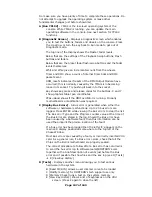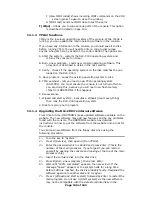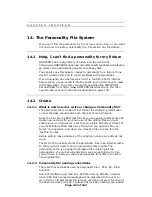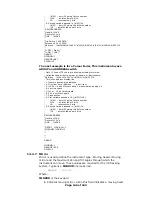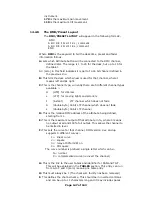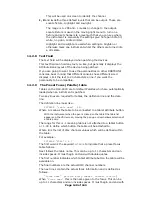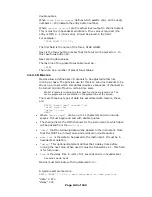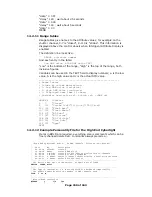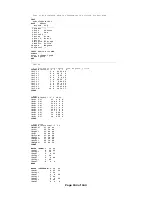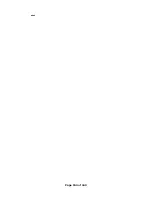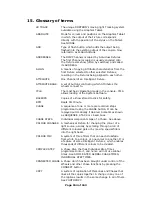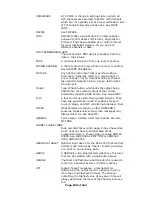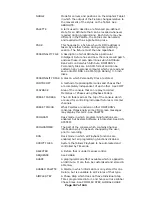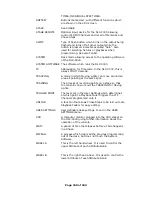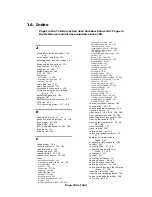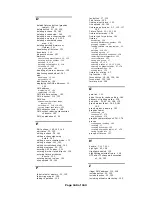
Page 145 of 163
For example a TYPE-LINE can look like:-
TYPE 1 8 M
Setting the device to:- 8 channels used patched from 512 downwards
and the next line sets a device for 10 channels and patched from 001 to
512
TYPE 1 10 D
14.2.6
Fixture switch settings
This allows the desk to display the exact switch settings required to
configure a fixture for a given DMX address and to ensure it is set in
the correct mode.
The display can be configured in virtually any way required. The fixture
switch detail MUST be declared before the DMX declaration.
A number of variables are provided for use within this function, these
must be in lower case:-
d = dmx number the instrument is assigned to
h = handle the instrument will be operated from
n = the device name, given earlier in the personality file
The keywords associated with the fixture switch settings are:
DEVICEADDRESS
DAEND
MINDMX
MAXDMX
DIVBY
The screen space allowed for displaying the fixture information is 10
lines by 21 characters.
The start and end of the fixture switch detail is marked by
DEVICEADDRESS and DAEND.
The formula to display this information is restricted to 10 lines by 79
characters.
The three other variables must be defined for the instrument are:-
•
MINDMX = lowest DMX number the instrument can be addressed
•
MAXDMX = highest DMX address number the instrument
•
DIVBY = The difference of two dmx addresses selected by changing
the LS bit of the address switch.
For example if the instrument address switch increments the DMX
number by 1 then the difference DIVBY will be 1, if, like on the
Cyberlight it increments by 20 then DIVBY would be 20.
DIVBY is used to ensure that an instrument can be addressed at the
address proposed by the user when patching.
There follows an example for a Cyberlight.
;This instrument can only be switched to certain DMX addresses.
; variables used d=dmx number, h=handle, n=devicename;
"Address %04b %1b001"16-(d/20%16),(d/20)/16
; This is the address display line
; 1. Items in quotes are displayed
; 2. First item here (Address ) is ascii text
; 3. %04b = 4 bits of binary data, 0 means display leading 0's
; 4. next is a space
; 5. %1b = 1 bit of binary data
; 6. 001 is ascii text again
; 7. Close quotes
; 8. first variable passed is 16-((d/20)%16)







